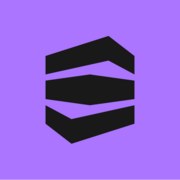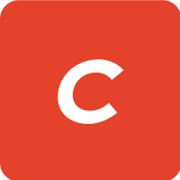
Best Headless CMS Platforms 2025
What are Headless CMS platforms? Headless content management systems (CMS) are the next generation of more traditional CMS platforms, built for the needs of the digital age. Specifically, headless CMS platforms have decoupled the backend database/content repository and the content authoring interface from the presentation layer. The content presentation layer can be thought of as the ‘head’ of traditional, or monolithic, content management systems. Thus, headless CMSs have severed the backend ...
We’ve collected videos, features, and capabilities below. Take me there.
All Products
Videos for Headless CMS
Learn More about Headless CMS Software
What are Headless CMS platforms?
Headless content management systems (CMS) are the next generation of more traditional CMS platforms, built for the needs of the digital age. Specifically, headless CMS platforms have decoupled the backend database/content repository and the content authoring interface from the presentation layer. The content presentation layer can be thought of as the ‘head’ of traditional, or monolithic, content management systems. Thus, headless CMSs have severed the backend body of the CMS platform from the display ‘head’.
Rather than having one ‘head’ attached to the rest of the CMS, headless platforms make content available as data via APIs. Some vendors refer to headless CMSs as ‘API-first’ platforms for this reason. Other common names for headless content management systems include:
Content infrastructure software
Content hub software
Content as a service
Headless CMS Advantages
Headless CMS platforms work well for businesses that need to produce content that can be shared and displayed across digital channels and device types. Typically, traditional CMS platforms are attached to a webpage presentation layer, meaning the content created can’t be pushed to other digital mediums like mobile applications.
Headless CMSs, on the other hand, offer businesses the freedom and flexibility to choose which digital mediums to share their content across. Another key benefit of headless CMS platforms is that the same piece of content can be pushed out across multiple digital channels—there’s no need to create multiple instances of it for each medium.
Limitations of Headless CMS Platforms
While headless CMS platforms work well for a wide variety of digital marketing needs, they are less appropriate for certain types of businesses. One key drawback of headless CMS software is that it doesn’t include the tools needed to build a website like traditional CMS platforms do. Since the content presentation/display has been ‘cut off’ from the rest of the system, users looking to build a website with a headless CMS won’t be able to. So a headless CMS platform may be less well suited for marketers looking to easily preview, upload, and tweak content to their website or blog.
On the one hand, this affords developers more flexibility in terms of designing a website with the tools they like best. But this also makes it harder for users without a technical background to get a new website up and running quickly. Another drawback of headless CMS platforms is that they will require additional development support to do things like preview content in different display formats.
Headless CMS Features
The primary distinctive features of a headless CMS are a decoupled backend (content repository and content authoring interface) from the frontend content display. Besides this hallmark structure, most headless CMS platforms will have the following capabilities:
Content modeling
Content authoring interface
Content repository/database
Content types and taxonomy
Localization
User roles and permissions
Omnichannel content publishing via APIs
Some hybrid CMS platforms offer additional content creation features that include:
Collaborative editing
Content templates
WYSIWYG editor
Content versioning
Collaborative editing
Approval & authoring workflows
Content personalization
Headless vs. Traditional CMS
The biggest and most identifiable difference between headless CMS and traditional CMS platforms is that headless CMSs lack a dedicated presentation layer, or ‘head’. Rather than push content directly to a website or blog, headless platforms deliver content across digital mediums via APIs.
In many ways, native headless CMS platforms built with a microservices architecture are better suited to meet the needs of digital marketing. This is likely the reason that many platforms that were originally traditional CMSs have started offering APIs and integrations so users can ‘decouple’ the frontend and backend of the platform. Some examples of these type of CMS platforms include:
Both native headless CMS platforms and traditional CMS platforms that now offer integrations to effectively decouple the backend and frontend of the platform are included in this category.
Different Types of CMS Platforms
As mentioned above, there is a key difference between traditional CMS and headless CMS platforms. Even though many traditional, or monolithic, CMS platforms have added content APIs to their platform—they were still originally designed with an attached presentation layer.
In terms of ease of use for end-users, who are typically marketing professionals and content writers, headless CMSs can have a less user-friendly content authoring and editing interface. For marketers that are used to creating and publishing content using a WYSIWYG editor and plug-and-play content templates—getting comfortable using a truly headless platform can be difficult. Traditional CMS are often more user-friendly for marketing and other non-technical end-users.
Along with headless and traditional CMS platforms, there are also hybrid platforms that aim to give users the best of both worlds. These platforms are decoupled CMSs with content APIs that also offer a presentation layer (or front-end). This means they have robust content authoring and editing capabilities. For example, they might offer content templates or a WYSIWYG editor. This makes them more user-friendly than many native headless platforms, while still affording developers the flexibility and freedom to deploy content across various digital channels using the content APIs.
Examples of traditional CMS platforms include:
Examples of true headless platforms include:
Examples of hybrid platforms include:
Pricing Information
Pricing for comprehensive headless CMS platforms that can support upwards of 10 users typically starts between $400-$450 per month. Most vendors charge either monthly or annually. Some platforms like Drupal and Prismic offer a free or open-source version of their CMS.Headless CMS FAQs
What is headless CMS?
What are coupled vs. decoupled CMS platforms?
Coupled CMS platforms, also called traditional or monolithic CMSs, have the frontend content display attached to the backend database and content authoring and editing interface. On the other hand, ‘decoupled’ CMS platforms have severed the connection between the two. Native headless CMS platforms that were built with content data APIs are decoupled by nature.
More recently, CMS platforms that were originally built to be coupled have started offering integrations that allow businesses to use the CMS platforms as a decoupled system.
What are the best headless CMS platforms?
According to end-user feedback on TrustRadius, some of the most popular (based on the number of reviews for each product) headless CMS platforms include:
Visit TrustRadius’ headless CMS platforms page to see alternative products and read in-depth end-user reviews.
























